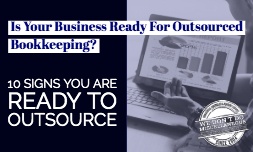As the current year progresses, forward-thinking business owners begin to shift their focus toward the future. Strategic financial planning is the backbone of sustainable growth, and setting clear priorities is essential for navigating the opportunities and challenges ahead. For 2026, moving beyond day-to-day cash flow management to a more structured, strategic approach will be critical for scaling your operations and securing your competitive edge.
To help guide your planning, we have identified three core financial priorities that every business should consider for the upcoming year. Focusing on these areas will not only improve your financial health but also empower you to make more informed, data-driven decisions that drive long-term success.
1. Optimize and Automate Financial Workflows
Manual data entry, paper-based invoicing, and disjointed financial systems are significant drags on productivity and accuracy. As businesses grow, these inefficiencies become more pronounced, leading to costly errors, delayed reporting, and a lack of real-time visibility into financial performance. For 2026, a primary goal should be to optimize and automate your core accounting and financial workflows.
Key Actions to Consider:
- Audit Your Current Processes: Begin by mapping out your existing financial workflows, from accounts payable and receivable to payroll and expense reporting. Identify bottlenecks, redundancies, and tasks that are prone to human error.
- Invest in Scalable Technology: Adopt modern accounting software and integrated financial tools. Cloud-based platforms can automate invoicing, streamline payment processing, and sync data across different departments, providing a single source of truth for your financial information.
- Focus on Integration: Ensure your financial systems can communicate with other business software, such as your CRM or inventory management system. Seamless integration reduces manual data transfer and provides a holistic view of your business operations, leading to more strategic insights.
Automating these processes frees up valuable time for your team to focus on higher-value activities, such as financial analysis and strategic planning, rather than administrative tasks.
2. Fortify Your Cash Flow Management and Forecasting
Cash flow remains the lifeblood of any business. However, simply managing day-to-day liquidity is not enough for ambitious growth. In 2026, the priority should shift from reactive cash management to proactive cash flow forecasting. Accurate forecasting allows you to anticipate future cash surpluses and shortfalls, enabling you to make strategic decisions about investments, hiring, and expansion with confidence.
Key Actions to Consider:
- Develop a Rolling Cash Flow Forecast: Instead of relying on a static annual budget, implement a 12-month rolling forecast that you update monthly or quarterly. This provides a more dynamic and accurate picture of your financial future.
- Analyze Key Variables: Your forecast should account for sales projections, seasonal trends, customer payment behaviors, and major upcoming expenses. Running different scenarios (best-case, worst-case, and most-likely) will help you prepare for a range of potential outcomes.
- Establish a Cash Reserve: A healthy cash reserve is your business's safety net. It provides the stability to weather unexpected downturns or seize sudden growth opportunities without taking on unnecessary debt. Aim to build and maintain a reserve that can cover three to six months of operating expenses.
3. Enhance Financial Reporting for Strategic Decision-Making
Standard financial statements like the income statement and balance sheet are essential, but they only tell part of the story. To truly drive your business forward, you need reporting that delivers actionable insights. In 2026, prioritize enhancing your financial reporting to go beyond historical data and provide the forward-looking analysis needed for strategic decision-making.
Key Actions to Consider:
- Define Your Key Performance Indicators (KPIs): Identify the financial and operational metrics that are most critical to your business's success. These could include customer acquisition cost (CAC), lifetime value (LTV), gross margin by product line, or monthly recurring revenue (MRR).
- Create Customized Dashboards: Work with your accounting team to build customized financial dashboards that track your KPIs in real time. Visualizing this data makes it easier to spot trends, identify areas of concern, and measure progress toward your goals.
- Schedule Regular Financial Strategy Meetings: Make it a routine practice to review your financial reports with key stakeholders. Use these meetings to analyze performance, discuss strategic implications, and make collaborative, data-informed decisions about the future direction of the business.
When your financial reporting is tailored to your strategic objectives, it becomes an invaluable resource for navigating growth and maximizing profitability.
Align Your Strategy for Success in 2026
Setting these financial priorities is a crucial first step, but execution is what determines success. A dedicated and experienced accounting partner can provide the expertise and infrastructure needed to implement these strategies effectively.
Partner with AccountingDepartment.com to align your accounting strategy for success in 2026. Our team of experts can help you automate workflows, build robust financial forecasts, and develop insightful reporting so you can focus on what you do best: growing your business.














